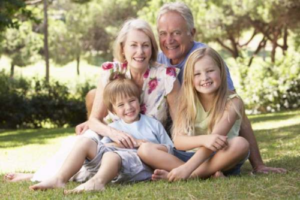Nursing homes play a crucial role in providing care and support to elderly residents, but they also face significant challenges in maintaining the safety and well-being of their residents. One of the most pressing concerns in nursing homes across Kansas is the prevention of falls and injuries among their residents. Falls can have devastating consequences for the elderly, leading to fractures, head injuries, and a decline in overall health. In this article, we will explore the importance of preventing falls and injuries in Kansas nursing homes, the regulatory requirements in place, and best practices that nursing homes should follow to ensure the safety of their residents.
The Prevalence of Falls in Nursing Homes
Falls are alarmingly common in nursing homes, affecting thousands of elderly residents every year. According to data from the Centers for Disease Control and Prevention (CDC), falls are the leading cause of injury-related deaths among adults aged 65 and older. In nursing homes, the risk of falling is even higher due to factors such as age-related mobility issues, cognitive impairments, and the presence of chronic medical conditions.
The consequences of falls in nursing homes can be severe. In addition to physical injuries, falls can also lead to psychological trauma, loss of independence, and a reduced quality of life for residents. It’s crucial for nursing homes in Kansas to take proactive measures to prevent falls and ensure the safety and well-being of their residents.
Regulatory Requirements for Fall Prevention in Kansas Nursing Homes
To address the issue of falls in nursing homes, both federal and state governments have implemented regulations and guidelines that nursing homes must follow. In Kansas, nursing homes are subject to both federal regulations and state-specific requirements. Some of the key regulations include:
- Federal Nursing Home Regulations: Nursing homes in Kansas must comply with federal regulations established by the Centers for Medicare & Medicaid Services (CMS). These regulations cover a wide range of aspects related to nursing home care, including resident safety. Nursing homes are required to assess the risk of falls for each resident, develop individualized fall prevention plans, and implement measures to mitigate those risks.
- Kansas Department for Aging and Disability Services (KDADS): The KDADS oversees nursing home facilities in Kansas and enforces state-specific regulations. Nursing homes are required to report fall incidents to KDADS and conduct internal investigations to identify the causes of falls. This information is crucial for developing effective fall prevention strategies.
- Staff Training and Education: Nursing homes are required to ensure that their staff receives proper training and education on fall prevention strategies. This includes training on the correct use of assistive devices, recognizing and addressing residents’ mobility limitations, and promoting a safe environment.
- Environmental Safety: Nursing homes must maintain a safe physical environment that minimizes hazards and obstacles that could lead to falls. This includes ensuring that floors are free of obstacles, adequate lighting is provided, and handrails are installed where necessary.
- Medication Management: Proper management of medications is essential in preventing falls. Nursing homes must conduct regular medication reviews to identify medications that may increase the risk of falls and take appropriate actions, such as adjusting dosages or discontinuing medications.
Best Practices for Fall Prevention
While regulatory requirements provide a framework for fall prevention, nursing homes in Kansas should go above and beyond to ensure the safety of their residents. Here are some best practices that nursing homes can implement:
- Comprehensive Assessments: Conduct thorough assessments of each resident’s risk of falling. Consider factors such as medical history, mobility limitations, cognitive impairments, and medications. Individualized care plans should be developed based on these assessments.
- Regular Staff Training: Continuously train and educate staff members on fall prevention strategies and the specific needs of residents. This includes recognizing early signs of mobility issues and addressing them promptly.
- Multidisciplinary Approach: Involve a multidisciplinary team, including nurses, physicians, physical therapists, and occupational therapists, in fall prevention efforts. Collaborative care can lead to more effective strategies.
- Fall Risk Communication: Ensure that residents and their families are informed about their risk of falling and the preventive measures in place. Encourage open communication to address concerns and preferences.
- Use of Assistive Devices: Provide residents with appropriate assistive devices, such as walkers, canes, and wheelchairs, and ensure they are used correctly. Regularly inspect and maintain these devices.
- Medication Management: Continuously review and monitor residents’ medications, especially those known to increase the risk of falls. Consult with physicians to adjust medication regimens when necessary.
- Environmental Safety: Regularly assess the facility’s physical environment for potential hazards. This includes checking for slippery floors, loose carpets, and well-maintained handrails.
- Exercise and Physical Therapy: Encourage residents to engage in appropriate physical activities and exercises to improve strength, balance, and mobility. Physical therapy programs can be highly effective in fall prevention.
The Role of Technology in Fall Prevention
In the modern era, technology has become an invaluable ally in the quest to prevent falls in nursing homes. Various technological advancements can enhance the safety of residents while also providing staff with valuable tools to monitor and respond to potential fall risks. Here are some ways in which technology can be integrated into fall prevention strategies:
- Fall Detection Systems: Many nursing homes now utilize advanced fall detection systems that employ sensors and alarms to detect when a resident may be falling or in distress. These systems can automatically alert staff members, enabling them to respond promptly to prevent or mitigate falls.
- Electronic Health Records (EHRs): Electronic health records can play a crucial role in fall prevention. They allow for more comprehensive and real-time documentation of a resident’s medical history, medications, and fall risk assessments. This information can be readily accessed by healthcare providers to inform care plans.
- Video Monitoring: Video monitoring systems in common areas can help staff keep an eye on residents and identify potential hazards. However, it’s essential to balance the use of video monitoring with residents’ privacy and consent.
- Telemedicine: Telemedicine technology allows healthcare providers to remotely assess and monitor residents, reducing the need for physical transfers that can increase fall risks. Telemedicine also offers a convenient way to address residents’ healthcare needs promptly.
- Wearable Devices: Wearable devices like smartwatches and fitness trackers can be used to monitor residents’ movement and alert staff when irregularities are detected. These devices can also encourage residents to stay active and engage in exercises that improve balance and strength.
Preventing falls and injuries in Kansas nursing homes is a critical priority to ensure the safety and well-being of elderly residents. While regulatory requirements provide a baseline for fall prevention, nursing homes should strive for excellence in their care practices. By conducting comprehensive assessments, providing regular staff training, and implementing best practices, nursing homes can create a safer and more comfortable environment for their residents.
At Melinda Young Law Firm, we are committed to advocating for the rights and well-being of nursing home residents in Kansas. If you believe that your loved one has suffered injuries due to negligence or inadequate fall prevention measures in a nursing home, please contact us today for a free consultation. Together, we can work to hold nursing homes accountable and ensure the safety and dignity of all residents.
